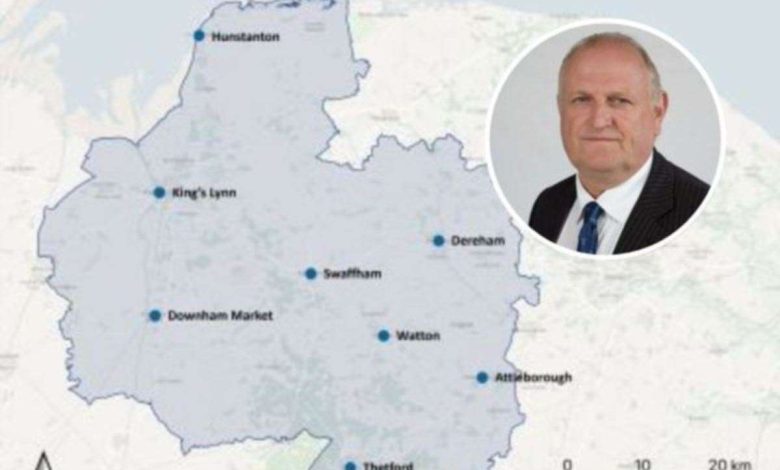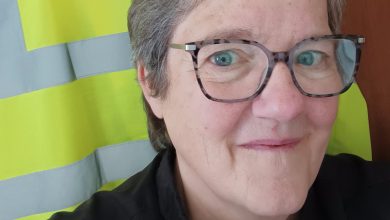West Norfolk Council leader Alistair Beales urges to ‘keep local Government local’ as reorganisation deadline looms

West Norfolk Concerns: The Debate Over Local Government Reorganization
West Norfolk Council leader Alistair Beales has voiced significant concerns about the potential implementation of a single unitary authority for Norfolk, famously stating, “We’re just not visible from Norwich.” This statement encapsulates the heart of a growing debate about local government reorganization in Norfolk, where existing councils face elimination in favor of new unitary authorities covering larger areas. The Government is expected to make a decision by March next year, determining how many authorities will run public services across the region—a decision that will profoundly affect local representation, service delivery, and community identity. West Norfolk Council has joined forces with five other councils (Breckland, Broadland, Norwich, Great Yarmouth, and North Norfolk) under the “Future Norfolk” banner to propose a three-unitary solution, dividing Norfolk into West Norfolk, East Norfolk, and Greater Norwich regions. This plan would include establishing Lynn’s own town council to maintain local governance connections. In contrast, Norfolk County Council has voted to support a single unitary system administered from Norwich, creating a fundamental disagreement about the future structure of local government in the area.
The core of Beales’ argument centers on West Norfolk’s distinctive character and needs, which he believes differ significantly from those of Central Norwich or East Norfolk. “It is right that local expertise informs the allocation of resources,” Beales explains, highlighting the importance of decision-makers understanding local contexts. The West Norfolk Council leader argues that their three-unitary proposal is not only cost-effective but also properly represents the community’s interests and identity. His fear is that a Norwich-centered single authority would marginalize West Norfolk’s concerns and reduce residents’ influence over decisions affecting their daily lives. “We already feel in West Norfolk sometimes that we are not seen prominently as we should be,” Beales notes, emphasizing that local identity and representation would inevitably suffer under centralized control. The three-unitary proposal aims to preserve what Beales considers a fundamental principle: “Keep local Government local.”
This position stands in stark contrast to the view expressed by Norfolk County Council leader Kay Mason Billig, who has argued that having one council for Norfolk is “the only sensible option.” The County Council maintains that a single unitary system would generate significant financial benefits, saving approximately £39.8 million annually while delivering greater service efficiencies. Deputy leader Andrew Jamieson has even claimed that a unitary authority would make services “even more local”—an assertion Beales dismisses as “an oxymoron.” The council leader expresses frustration with what he characterizes as “misinformation” from County leadership, suggesting they are struggling with the transition process. This fundamental disagreement reflects deeper tensions about the meaning of local representation and governance priorities in the region.
The implications for residents extend far beyond abstract governance structures, touching on practical aspects of daily life and democratic representation. Beales emphasizes that the reorganization will affect everything from bin collections and planning committees to how residents are represented in local government. The current system allows West Norfolk residents to influence decisions through relatively accessible local government in King’s Lynn, but Beales fears this connection would be lost under a Norwich-based authority. “If there is a single authority for Norfolk, West Norfolk is not very visible from Norwich, I’m afraid. We have experienced this many times already,” he cautions. With upcoming elections, Beales urges residents to recognize the significance of these changes and vote for candidates who will effectively represent their interests during this transitional period.
An often-overlooked aspect of the debate concerns the ceremonial and community role of the local mayor. Beales highlights the unique value of having a local, present mayor who attends community events and serves as a visible symbol of local governance. “Nobody would notice if a leader of the council turns up, but with a mayor, everybody notices,” he observes. This position allows the mayor to “bring people together, drive charitable work and… really do a huge amount” for the community. Beales considers the continuation of the mayoral role essential to maintaining community cohesion and civic pride—functions that might be diminished under a more centralized system. This perspective emphasizes that local government reorganization affects not just administrative efficiency but also community identity and cultural traditions that have developed over generations.
The debate over Norfolk’s future governance structure ultimately reflects a tension between competing visions of local democracy. The County Council’s approach prioritizes efficiency, cost savings, and standardized service delivery across the entire county. In contrast, the district councils’ three-unitary proposal emphasizes the importance of local knowledge, accessibility, and community-specific representation. As the Government prepares to make its decision by March, West Norfolk residents find themselves at a crossroads, contemplating a future where their local concerns might be determined from an office in Norwich rather than from within their own community. While the financial arguments for consolidation are substantial, Beales and his supporters believe that something less tangible but equally valuable—local identity and democratic representation—hangs in the balance. As Beales puts it, “It matters to them,” emphasizing that this reorganization is not merely an administrative reshuffling but a fundamental question about how communities are governed and represented in the modern age.








